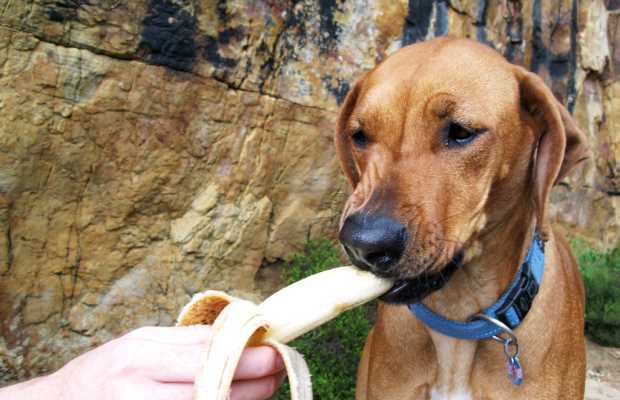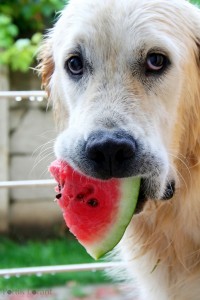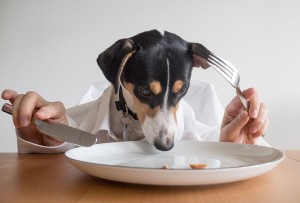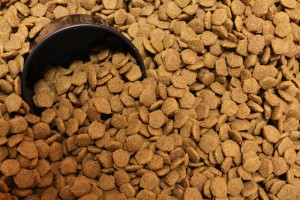
To keep our dogs healthy and happy, a good and nutrient rich diet is vital. Most canines are active pets that need balanced diets of high quality dog food to adhere to all requirements of proper dog nutrition.
Depending on how you choose to feed your dog, your pooch's meal plans will usually include meats, vegetables and grains that will provide the necessary amount of proteins, fats, vitamins and minerals to your dog. Just like we care about our own diet, dogs too need to be supervised on what they consume.
Obesity in dogs is prevalent these days, especially in the USA, but the good news is that more dog owners are becoming conscious of what they feed their dogs, and the type of dog food they choose to buy. Naturally, too many fatty foods or foods that are high in sugar or sodium can cause health issues for your pet: anything from mild symptoms to obesity, diabetes, chronic lethargy, fur loss, arthritis and much more. To avoid any health issues like that, a proper diet of high quality dog food is necessary.
RELATED: Top 10 best dog food brands

In addition to choosing healthy and natural dog food, your pet's diet should also be based on factors such as age, size and general activity level. Most vets will be able to help you determine which diet best suits your four legged friend based on their current condition.
Further to what was already mentioned, good dog nutrition is also important to keep your pooch's heart, kidneys and joints healthy, which are some of the most common dog health issues.
Lastly, remember that there are certain foods your dog must never eat, as these can cause serious health problems, and in the most extreme cases can also be fatal. Now, let's talk more about proper dog nutrition.
How much should I feed my dog?
The breed, age and size of your dog will determine how much you should be feeding him. A puppy's biggest growth period is up until he is 7 months old. Adult dogs eat twice a day, typically morning and night, whereas puppies need to eat more often to fuel their growth and to keep up with their metabolism.

The level of physical activity your dog performs will also determine how much he should eat. A working dog or one that runs a lot will typically need to eat more than an inside dog who is happy to spend most of his time just lying around with his family.
RELATED: Essential dog care tips
Your dog's breed factors in as well. A Rottweiler will eat a lot more than a Chihuahua will, for example. Another factor is your dog's age: older canines will have lower energy requirements and will eat less than a younger, more active pup. If you're finding it difficult to determine how much energy your dog expends daily and what type of dog nutrition you need to apply – check with the veterinarian. Your vet will be able to guide you in the optimal amounts you should be feeding your dog.
Alternatively, you can also use an online calculator for finding out how much to feed your dog. One of the best dog food calculators that most pet owners and dog professionals use is the Dog Food Calculator on Amazon. You can enter a whole bunch of details into the calculator, such as your dog's life stage, what type of food you're looking for and you'll get the results of dog food on Amazon that fits your requirements.
Remember that dogs don’t necessarily stop eating when they are full, and it is easy to over feed them, which can lead to many serious health issues, so this have to be taken into account as well.
What should I feed my dog?
No longer is there a debate over whether dry food or wet food is better for your dog. Scientists and nutritionists have spent a lot of time conducting research into almost all of the dog foods out there and as a result, dog food manufacturers today are using higher quality products. A combination of both worlds can be good to provide your dog with the vitamins and nutrients that he needs.
RELATED: Best dry dog food brands

Although when you shop online for dog food you get almost always higher quality kibble, some cheaper brands still exist, and they use filler foods like corn or grains. However, most canned pet foods now provide a good source of meat with very few added preservatives, and if you do your research, there's very little risk that you'll choose the wrong product.
Finally, you can also make your own dog food at home. This option is time consuming, but it's safe and reliable, because you know exactly what your pooch is eating on a daily basis. If you choose to make your own dog food at home, there are a few excellent foods that you can feed Fido:
- Eggs are a great source of protein and filled with vitamins and minerals. The jury is still out on whether raw eggs are okay for your dog, but to be safe, cook them first.
- Bones are great for encouraging the motion of chewing, which promotes healthy saliva that cleans your dog’s mouth; they are also a tasty treat. But beware, not all bones are good for your dog. Cooked chicken bones especially can splinter and cause terrible tears to your dog’s throat and stomach lining if swallowed. Your best option is to look for dog specific bones at your local supermarket.
- Fish is an excellent source of protein but make sure it is cooked as raw fish can carry parasites that can seriously hurt your dog.
- Raw meat should be cooked to eliminate any nasty bugs that could be hiding it in, like E. coli.
- Vegetables like canned pumpkins are plentiful in fibre and nutrients, just don’t give your dog too much or too often as high doses of Vitamin A can be toxic to the dog.
- Rice, oats and barley are great for your dog, especially if he is feeling a little upset in the tummy and needs a bland diet for a few days. Maintain regular vet visits though, as your dog could have a gluten allergy.
Things never to feed to your dog
There is very little your dog won’t instinctively try to put into his mouth. Dogs are naturally inquisitive and whether he just feels like he needs to chew on something or has decided he is so hungry he can’t wait for dinner time, there are some foods and plants that can be incredibly toxic for your dog if ingested. Here are a few of those, but there's more to watch out for:
- Chocolate
- Avocados
- Alcohol and caffeine
- Onion and garlic
- Peaches
- Grapes and raisins
- Mushrooms
- Tomatoes
- Walnuts and macadamia nuts
- Nutmeg and other spices
The most common reason dogs ingest these foods is because they get them from the owner's table, either while owners aren't watching, or because the owners themselves feed something to the dog right off the table. To avoid this, train your dog not to beg for food and avoid this common behavior problem that causes even more complications down the road.
Common health issues from poor dog nutrition

Maintaining a well balanced, nutritional diet for your dog is the easiest way to ensure he lives a long and happy life.
The best way to tell that your dog’s diet is working in his best interest is if his energy levels are high, his coat is shiny and lustrous, his stool samples are solid and by his overall health and happiness levels. If your dog is lethargic, or you simply see a change in your dog's energy levels, activity levels, appetite or anything else – start by looking into your dog's diet first.
RELATED: How to make your own first aid kit for dogs
Sometimes feeding your dog the wrong foods can be detrimental and have extremely adverse effects to his health. Here are some of the issues your pooch can be facing if you do not ensure a proper diet for him:
- Constipation – can be a sign of more serious health issues like prostate disease but is most commonly a cause of insufficient water and fibre intake.
- Pancreatitis – eating too much fatty food can cause pancreatitis.
- Arthritis – not controlling his food intake can cause your dog to become overweight, which puts strain on his bones and joints, causing inflammation and pain.
- Obesity – over feeding your dog can damage his health in many ways. Not only can it lead to diabetes, but the extra weight can put a strain on the heart and joints.
- Diabetes – eating too much food that is high in sugar can cause diabetes.
Always make the right choices

To sum up this short dog nutrition overview, make sure you dedicate a couple of hours to simply educate yourself on dog nutrition and know what types of dog foods are good for your pooch. In the back of your mind, always keep asking the right questions, such as:
- What's my dog's breed or size?
- What's my dog's age?
- Does my dog have special health considerations?
- Which dog food brand is right for my dog's specific case?
Remember that not all pet food is created equally. Even though most of dog foods on the market today meet the AAFCO nutritional requirements for basic nutrient needs to support a canine's life stages, there are still some shady brands out there that you should watch out for. The easiest way to avoid being scammed on dog food is to always read your dog food labels.
RELATED: What you need to know about dog poison prevention
The biggest giveaway sign of a lower grade dog food that is cheaper is their limited number of formulas for your Fido's specific needs and conditions. For comparison, think about the formulas that proven and trust dog food brands have, such as:
- Grain-free dog food formula
- Organic dog foods
- Natural dog foods
- Dog food for puppies
- Dog food for older canines
- Formula for urinary health
- Formula for oral care
- Formula for dogs on a diet
- Formula for specific breed, age or lifestage
Do your research well and there will be little room for error when choosing the best quality dog food for your pooch, and ensuring proper dog nutrition practices for the benefit of your pet's health and overall well-being.
Disclosure: We may earn affiliate commissions at no cost to you from the links on this page. This did not affect our assessment of products. Read more here and find full disclosure here.












